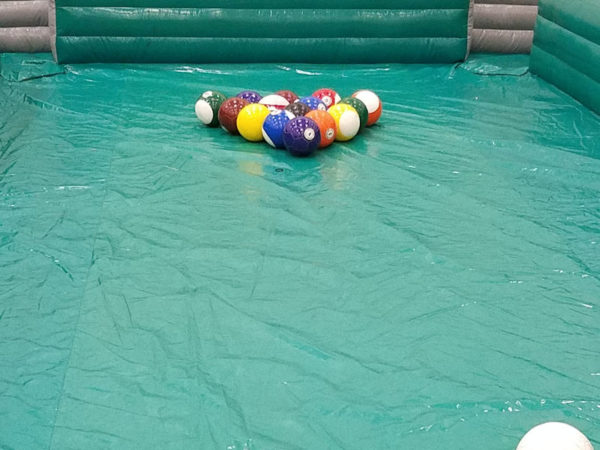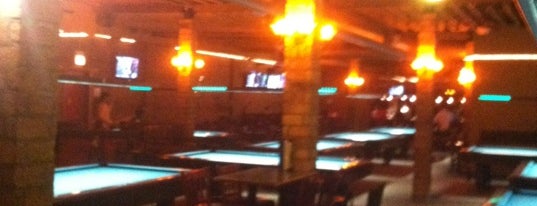

īy 1670, the thin butt end of the mace began to be used not only for shots under the cushion (which itself was originally only there as a preventative method to stop balls from rolling off), but players increasingly preferred it for other shots as well. In England, the game was developing into a very popular activity for members of the gentry. Billiards grew to the extent that by 1727, it was being played in almost every Paris café.

The imprisoned Mary, Queen of Scots, complained when her table de billiard was taken away (by those who eventually became her executioners, who were to cover her body with the table's cloth). While the game had long been played on the ground, this version appears to have died out (aside from trucco) in the 17th century, in favor of croquet, golf and bowling games, even as table billiards had grown in popularity as an indoor activity. Louis XIV further refined and popularized the game, and it swiftly spread among the French nobility. King Louis XI of France (1461–1483) had the first known indoor billiard table.

The sons of Louis, Grand Dauphin, playing the 'royal game of fortifications', an early form of obstacle billiards with similarities to modern miniature golfĪ recognizable form of billiards was played outdoors in the 1340s, and was reminiscent of croquet. This refers to the early practice of using the tail or butt of the mace, instead of its club foot, to strike the ball when it lay against a rail cushion. Cue itself came from queue, the French word for ' tail'. The modern term cue sports can be used to encompass the ancestral mace games, and even the modern cueless variants, such as finger billiards, for historical reasons. The word billiard may have evolved from the French word billart or billette, meaning 'stick', in reference to the mace, an implement similar to a golf putter, and which was the forerunner to the modern cue however, the term's origin could have been from French bille, meaning 'ball'. History Billiards in the 1620s was played with a port, a king pin, pockets, and maces.Īll cue sports are generally regarded to have evolved into indoor games from outdoor stick-and-ball lawn games, specifically those retroactively termed ground billiards, and as such to be related to the historical games jeu de mail and palle-malle, and modern trucco, croquet, and golf, and more distantly to the stickless bocce and bowls. Snooker, English billiards, and Russian pyramid, played on a large, six-pocket table (dimensions just under 12 ft by 6 ft), all of which are classified separately from pool based on distinct development histories, player culture, rules, and terminology.īilliards has a long history from its inception in the 15th century, with many mentions in the works of Shakespeare, including the line "let's to billiards" in Antony and Cleopatra (1606–07), and enthusiasts of the sport include Mozart, Louis XIV of France, Marie Antoinette, Immanuel Kant, Napoleon, Abraham Lincoln, Mark Twain, George Washington, French president Jules Grévy, Charles Dickens, George Armstrong Custer, Theodore Roosevelt, Lewis Carroll, W. C. Fields, Babe Ruth, Bob Hope, and Jackie Gleason.
FREE BILLIARDS CHICAGO PRO



 0 kommentar(er)
0 kommentar(er)
